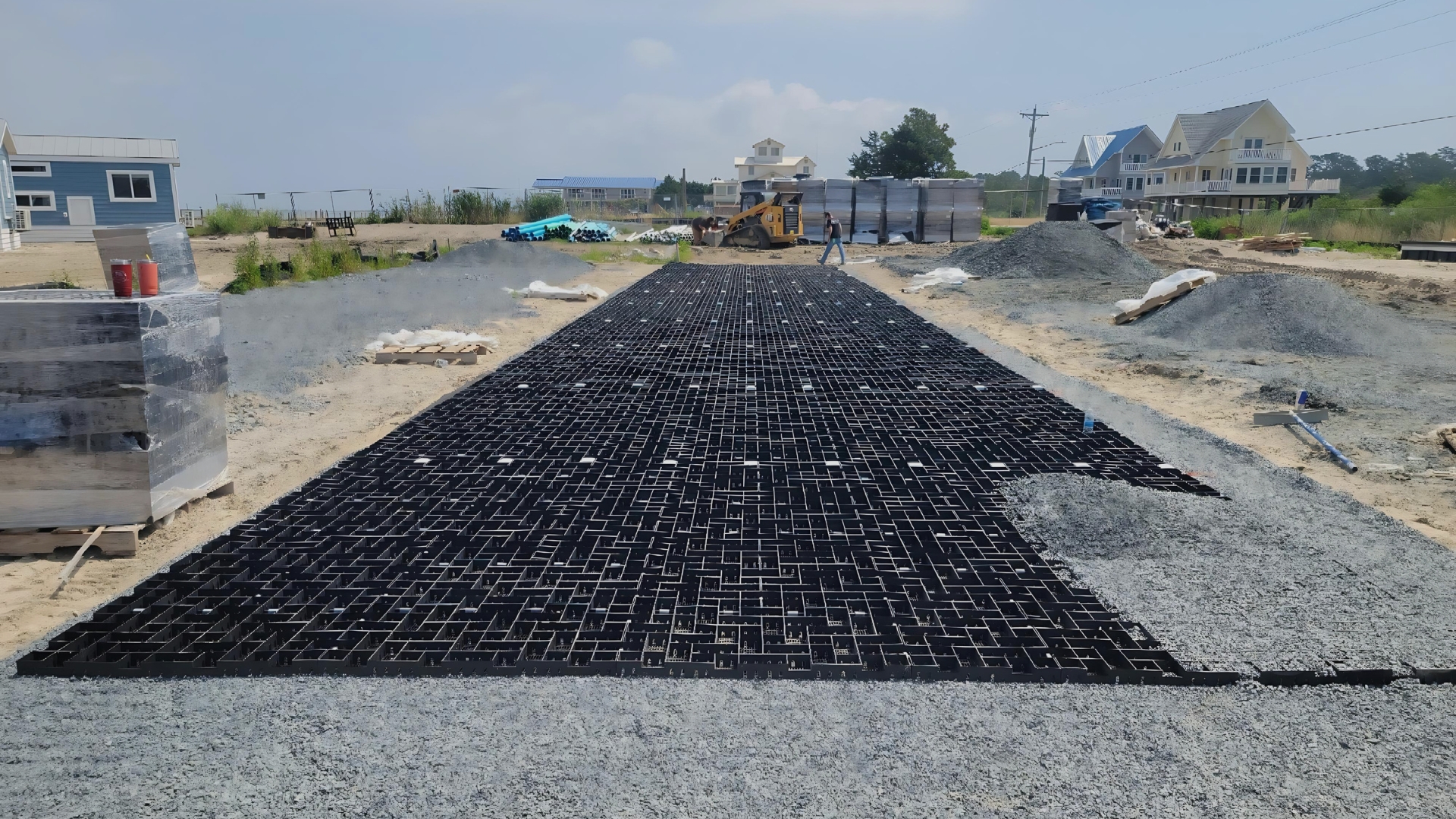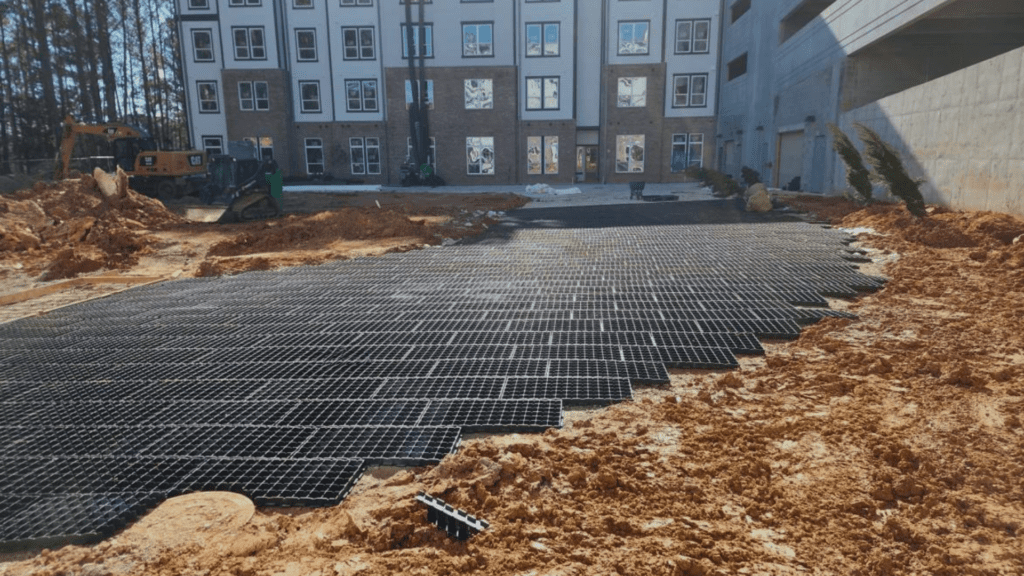18 MarGreen Infrastructure Solutions and Benefits
Going Green
Stormwater runoff is a significant contributor to water pollution in our urban areas and waterways. When not properly managed, runoff poses health risks to our communities and our environment.
Our urban and suburban areas are mostly covered with concrete and asphalt surfaces. These impervious surfaces prevent rainwater from infiltrating into the ground. As runoff flows over impervious surfaces, it collects debris and contaminants. Gray infrastructure systems are made up of pipes and gutters that channel water to water treatment plants or to water bodies. In many areas, existing gray infrastructure is aging and unable to meet the capacity demands of growing communities.
Green infrastructure seeks to supplement gray with more natural and environmentally friendly practices. The old method of collect, convey and disperse is supplemented with treating stormwater at its source so that rain can infiltrate the natural way.
Why More Communities are Adopting Green Infrastructure
Actionable Ways to Add Green Infrastructure
There are countless ways to incorporate green infrastructure into our communities. The following examples include structural, non-structural and hybrid solutions that developers and municipalities can implement with products from Colonial Construction Materials.

Permeable Pavements & Green Parking
Permeable pavements reduce stormwater runoff, reduce sheet flow, improve erosion issues and reduce the need for stormwater infrastructure to convey stormwater runoff away from the paved surface. Porous pavements can easily be incorporated into design for commercial, residential and municipal developments because the applications are so diverse; substitute or complement traditional concrete and asphalt surfaces with permeable products for parking lots, sidewalks, alleys, driveways, paths and emergency access lanes.
When selecting a porous pavement product, choose from GEOBLOCK grass pavers, GEOPAVE aggregate pavers, GEOWEB cellular confinement system or PaveDrain articulated concrete pavers.
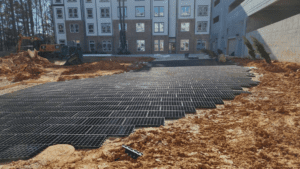
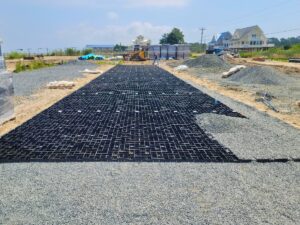
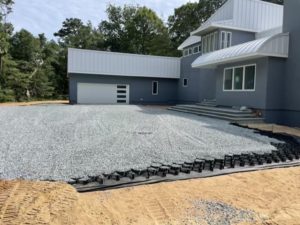

| GEOBLOCK | GEOPAVE | GEOWEB | PaveDrain | |
|---|---|---|---|---|
| Size | 1.2″ wall height or 2″ wall height 40″ x 20″ panel | 2″ wall height 40″ x 20″ panel | 3″, 4″, 6″ and 8″ depths various lengths and widths | 5.65″ tall 12″ x 15″ block 50 lb per block |
| Design | Rigid panel with open bottom cell to support turf establishment | Rigid panel in herringbone design with mesh bottom to confine infill | Flexible panel system with perforated cells and open bottom to support various fills and applications. | Arched articulated concrete block that stores stormwater runoff |
| Connection | Interlocking tabs | U-Clips | ATRA anchors and rebar | Joints are left open to allow infiltration |
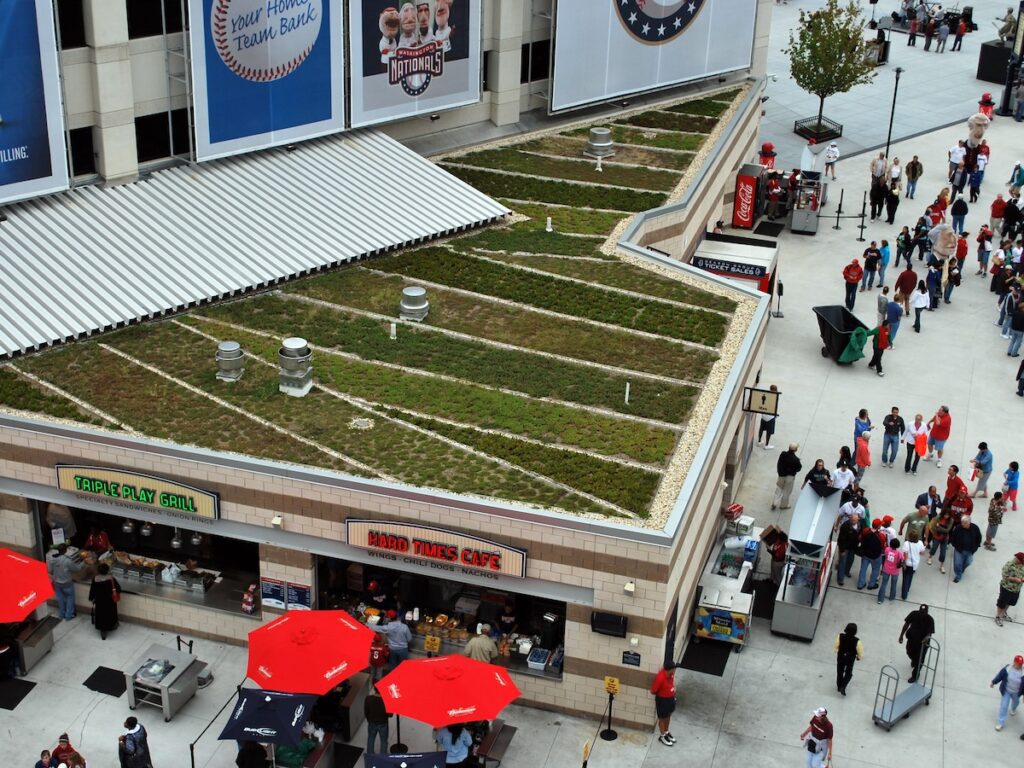
Green Roofs
A green roof is partially or completely covered with grass, plants or growing mediums. Vegetated roofs allow infiltration and evapotranspiration of stored water. This practice can reduce the temperature of the roof and the surrounding air by as much as ten degrees. When designing a green roof, consider incorporating Permaloc’s CleanLine XL landscape edging to create well defined spaces.
CleanLine XL is an extra deep and heavy duty landscape edging that is well suited for deep separation and raised beds. CleanLine XL is made from durable post-consumer aluminum and is 100% recyclable, qualifying it for LEED points.

Living Shorelines
Living shorelines enhance coastal developments with ecologically beneficial alternatives such as oyster beds or wetland plantings. Living shorelines are a sustainable and environmentally friendly method of controlling flooding and coastal erosion.
We supply several products that have proven success on living shoreline projects including coir logs, jute matting and degradable erosion control blankets.
Install Coir Logs parallel to the shore to create a living breakwater that dissipates break wave action and filters out pollution.
Incorporate Eco-Jute matting or 100% degradable erosion control blankets for stabilizing soil and right of ways near living shorelines. These environmentally-friendly erosion control measures fully degrade overtime while provided a suitable environment for vegetation to establish.
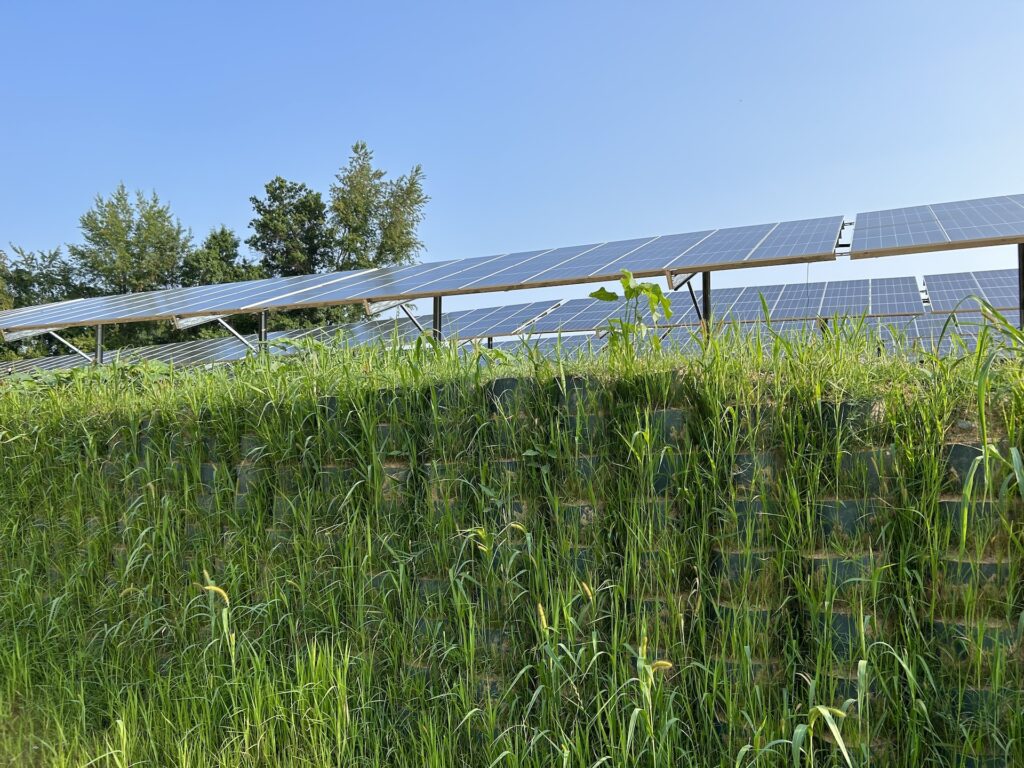
Green Walls
Green walls are a low-impact design that reduces stormwater runoff while meeting structural design requirements.
Our GEOWEB wall system constructs open-celled horizontal terraces that are filled with topsoil and vegetated to improve stormwater infiltration, reduce runoff and create a more aesthetic alternative to MSE block walls. GEOWEB green walls qualify for LEED credits and can be incorporated into steepened slopes, reinforced walls, gravity walls and multi-layered channel systems.

Upgrade Gray Infrastructure
Across the United States, stormwater infrastructure is aging and in need of replacement to keep up with updated requirements for capacity and flood design.
When comparing HDPE pipes, consider a product that uses recycled material. Our HDPE Pipe (ASTM F2648) is made from a compound of virgin and recycled HDPE which can qualify for LEED credits when incorporated into design.
Virgin resin is more expensive than recycled products which results in higher construction costs. Additionally, recycled compounds have been proven to provide an equal level of performance.
Green Infrastructure in the Mid-Atlantic
We’re pleased to be a part of a community that believes in the power of green infrastructure.
Virginia Beach incorporates multiple environmental friendly green initiatives in all its programs and projects. These include applying LEED standards on their construction projects, a commitment to a Canopy Program and use of green solutions in combination with gray solutions to combat recurrent flooding and sea level rise.
When more communities commit to green infrastructure, we can all make a positive impact on the infrastructure of our community and our environment.
Contact our team if you are designing a project that incorporates green infrastructure solutions. We can help you select the best products for sustainable design applications.




